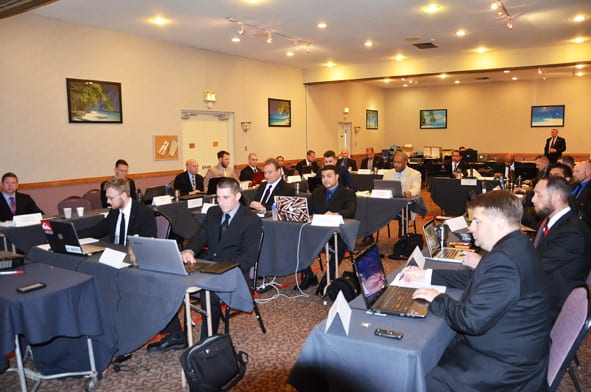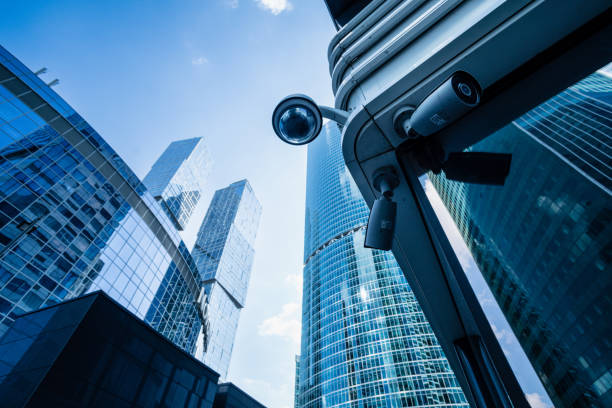Mastering Corporate Security: Proven Methods for Service Defense
Wiki Article
From Cybersecurity to Physical Steps: Enhancing Company Safety And Security in a Changing World
In today's swiftly evolving digital landscape, the value of business security can not be overemphasized. As cyber threats become common and progressively sophisticated, organizations should surpass conventional cybersecurity steps to safeguard their possessions and procedures - corporate security. This is where the combination of physical safety steps becomes critical. By integrating the strengths of both cybersecurity and physical safety, firms can produce a detailed protection technique that resolves the varied series of threats they deal with. In this conversation, we will explore the altering hazard landscape, the need to incorporate cybersecurity and physical protection, the application of multi-factor verification procedures, the relevance of worker recognition and training, and the adjustment of protection steps for remote labor forces. By taking a look at these essential locations, we will acquire valuable insights into just how organizations can reinforce their corporate safety and security in an ever-changing globe.Understanding the Altering Hazard Landscape
The evolving nature of the contemporary globe requires a detailed understanding of the changing risk landscape for effective company safety. It is essential for organizations to remain informed and adjust their safety gauges to deal with these progressing dangers.One secret facet of recognizing the changing risk landscape is identifying the various kinds of hazards that companies deal with. Furthermore, physical dangers such as burglary, criminal damage, and corporate espionage remain widespread worries for companies.
Tracking and assessing the danger landscape is vital in order to determine possible threats and vulnerabilities. This entails staying updated on the most recent cybersecurity patterns, examining hazard intelligence reports, and carrying out normal danger analyses. By understanding the altering danger landscape, companies can proactively execute proper security measures to reduce threats and safeguard their assets, track record, and stakeholders.
Integrating Cybersecurity and Physical Security
Incorporating cybersecurity and physical protection is crucial for comprehensive company security in today's electronic and interconnected landscape. As companies significantly depend on modern technology and interconnected systems, the borders between physical and cyber risks are coming to be obscured. To properly protect versus these threats, a holistic strategy that integrates both cybersecurity and physical safety and security measures is vital.Cybersecurity concentrates on securing electronic assets, such as systems, networks, and information, from unapproved access, interruption, and burglary. Physical security, on the various other hand, encompasses actions to secure physical properties, individuals, and centers from susceptabilities and risks. By integrating these two domains, organizations can attend to vulnerabilities and threats from both physical and electronic angles, consequently enhancing their general safety position.
The combination of these 2 self-controls permits a much more detailed understanding of safety risks and enables a unified action to cases. Physical accessibility controls can be enhanced by incorporating them with cybersecurity procedures, such as two-factor verification or biometric identification. Similarly, cybersecurity steps can be complemented by physical safety steps, such as monitoring cams, alarms, and protected gain access to points.

Applying Multi-Factor Authentication Actions
As organizations significantly prioritize detailed safety and security actions, one reliable technique is the application of multi-factor verification steps. Multi-factor verification (MFA) is a security technique that calls for customers to supply numerous types of identification to access a system or application. This method includes an additional layer of security by combining something the customer understands, such as a password, with something they have, like a safety and security or a finger print token.By implementing MFA, companies can substantially boost their security position - corporate security. Typical password-based authentication has its restrictions, as passwords can be quickly compromised or failed to remember. MFA minimizes these dangers by adding an extra authentication factor, making it extra tough for unauthorized people to access to delicate details
There are a number of types of multi-factor verification techniques readily available, including biometric verification, SMS-based confirmation codes, and equipment symbols. Organizations need to analyze their details demands and pick the most ideal MFA option for their needs.
Nonetheless, the application of MFA must be very carefully intended and executed. It is critical to strike an equilibrium in between security and functionality to stop customer frustration and resistance. Organizations ought to also think about prospective compatibility issues and give ample training and support to make sure a smooth change.
Enhancing Worker Awareness and Training
To strengthen business protection, companies have to focus on improving worker recognition and training. In today's quickly evolving threat landscape, staff members play an important duty in guarding a company's sensitive information and properties. Many safety breaches occur due to human error or absence of recognition. For that reason, organizations need to spend in comprehensive training programs to enlighten their workers concerning potential risks and the most effective techniques for alleviating them.Efficient employee awareness and training programs need to cover a variety of topics, consisting of information security, phishing strikes, social engineering, password hygiene, and physical protection measures. These programs should be tailored to the particular requirements and obligations of different worker roles within the organization. Normal training workshops, simulations, and sessions can aid staff members create the required skills and knowledge to determine and respond to safety and security hazards properly.
Moreover, organizations ought to urge a culture of protection understanding and provide continuous updates and reminders to maintain workers notified regarding the most up to date threats helpful hints and reduction techniques. This can be done with inner communication channels, such as e-newsletters, intranet portals, and e-mail projects. By fostering a security-conscious view it labor force, companies can considerably minimize the possibility of safety cases and safeguard their beneficial assets from unapproved gain access to or concession.

Adapting Safety Procedures for Remote Labor Force
Adjusting corporate safety measures to suit a remote workforce is important in making certain the security of delicate info and properties (corporate security). With the enhancing trend of remote work, organizations should execute suitable safety measures to reduce the dangers associated with this new way of workingOne vital aspect of adjusting protection steps for remote job is developing safe and secure communication channels. Encrypted messaging platforms and virtual exclusive networks (VPNs) can assist secure sensitive information and stop unauthorized accessibility. In addition, organizations must enforce the use of strong passwords and multi-factor verification to improve the security of remote access.
Another essential factor to consider is the implementation of secure remote accessibility solutions. This involves supplying staff members with protected accessibility to company resources and data with online desktop computer facilities (VDI), remote desktop computer methods (RDP), or cloud-based options. These innovations guarantee that delicate information continues to be protected while allowing employees to execute their duties effectively.

Last but not least, comprehensive safety and security awareness training is important for remote employees. Training sessions must cover best methods for safely accessing and handling delicate info, determining and reporting phishing efforts, and keeping the total cybersecurity health.
Conclusion
Finally, as the threat landscape remains to advance, it is critical for organizations to enhance their protection determines both in the cyber and physical domain names. Integrating cybersecurity and physical safety and security, executing multi-factor authentication actions, and boosting worker recognition and training are crucial steps in the direction of achieving durable corporate safety and security. Furthermore, adjusting safety actions to fit remote labor forces is important in today's changing world. By carrying out these procedures, organizations can alleviate risks and shield their important possessions from possible risks.In this discussion, we will explore the altering threat landscape, the demand to incorporate cybersecurity and physical security, the execution of multi-factor authentication measures, the importance imp source of worker awareness and training, and the adjustment of safety and security procedures for remote workforces. Cybersecurity measures can be enhanced by physical safety and security actions, such as monitoring electronic cameras, alarm systems, and safe accessibility points.
As companies significantly focus on extensive security actions, one effective approach is the application of multi-factor verification measures.In final thought, as the risk landscape proceeds to advance, it is important for organizations to reinforce their protection gauges both in the cyber and physical domains. Integrating cybersecurity and physical protection, executing multi-factor authentication measures, and improving employee understanding and training are essential actions towards achieving robust business security.
Report this wiki page